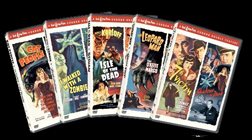 BUY IT AT AMAZON: CLICK HERE!
BUY IT AT AMAZON: CLICK HERE!
STUDIO: Warner Bros.
MSRP: $19.98
RATED: NR
RUNNING TIME: 71 Minutes
SPECIAL FEATURES:
� Commentary
� Shadows in the Dark: The Val Lewton Legacy
� Trailer
How can a
director have more than one best film? The critic’s card of relativity. For streamlined
psychological horror, it’s impossible to beat Cat People (reviewed here), Val Lewton’s
first production for RKO. But the producer and his crew did more than horror.
They were also helping invent film noir, and bending the genre before anyone
realized there was a genre to bend. That’s where The Seventh Victim,
Lewton’s other best movie, comes in. This is a cold, dangerously dark film that
refutes all the hard boiled detective cliches so frequently associated with
noir.
The Flick
The Seventh Victim hinges on a question: Where is
Jacqueline Gibson? Mary, her young sister, is determined to find the answer.
She leaves the sheltered innocence of an exclusive girl’s school and travels to
New York City, where Jacqueline was last seen. Broadly, her journey is a
classic one from innocence to experience, but we quickly see that in Lewton’s
world innocence is relative.
The plot
is among Lewton’s most complex. It twists in the shadows of the city at night,
threatened by a hangman’s noose. A poet and cuckolded husband form an unlikely
friendship. Everyone lies with abandon and the truth is peeled back in thin sheets.
Finally a strange downtown satanic cult takes up the mantle of villain. In true
Lewton fashion, all elements are developed gradually, in detail. Even the cult
is a frighteningly believable group of rich, refined New Yorkers who have
nothing better to do than create a secret society.
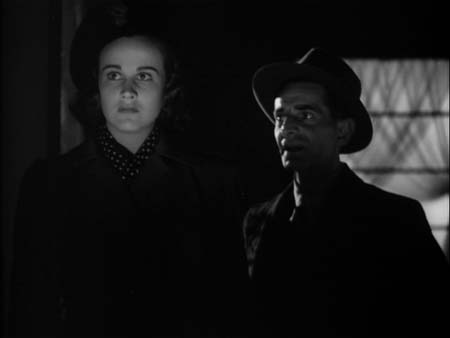
“Lady, stop emanatin‘! Dis here’s supposed to be clandestine!”
To
represent the film as a whole, check out this segment. Mary meets Irving
August, a rat-faced private dick who offers help. But Mary isn’t quite helpless
and August is no hero. His offer turns out to be short-lived; he’s bumped off
before he can do more than tantalize Mary with clues. His death is the movie’s
statement of purpose: we’re alone in the dark, and no one can drive away the
shadows.
The death
of Irving August is even more complex. For Mary prods him towards his death. As
they break into a dark building at her insistence, she’s as afraid of what lies
ahead as he is, but goads him into advancing while she holds back. That action
haunts Mary, and we learn that things might have been very different if not for
her cowardice.
You don’t
often see such a morally culpable heroine, even in noir. This is the sort of
mystery that Paul Auster would write, or Jonathan Carroll if he ditched the
talking dogs. It’s urban and modern; there’s a sense that things are out of control
and that one’s fate is invisibly determined by people just around the corner. Without
a heroine we can explicitly trust, the darkness threatens to consume all.
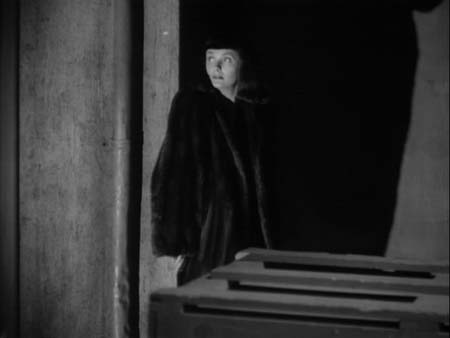
Sam
Fisher said he hated drag ops. Secretly, he loved to walk in the shoes of Snipes.
The
film’s director was Mark Robson, an RKO editor who cut Lewton’s first films for
the studio. Though this was his first film, it’s no surprise that Robson’s
touch for suspense was strong. Since Cat People, he’d supported Lewton
and Jacques Tournier with a distinguished ability to assemble a scene. Here, in
conjunction with Lewton’s darkly humanist sense, he adds strange touches to an
already multifaceted story. Suggestions of lesbianism and a preoccupation with duality
shade the film.
The duality
issue is highlighted by the return of Cat People‘s Dr Louis Judd. The
doctor has a hand in Jacqueline’s disappearance and he has a complex
relationship with Jason, the discouraged poet who befriends Mary. (Jason makes
the plot’s hellish allusions clear; he’s described as sitting ‘at the feet of
Dante’.) Once again it’s tempting to see Judd as a selfish, almost antagonistic
force, but his dialogues with Jason are so honest and begrudgingly kind that
it’s impossible to limit him to that.
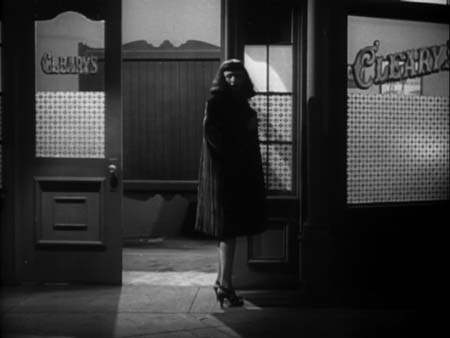
Before the name change, it was just another bar where Claven drove the chicks away.
That
layered approach to humanity is among Lewton’s defining qualities. Here, it’s
paramount. You’d almost think Lewton isn’t interested in his plotline. At every
opportunity, he and Robson indulge in tangents to flesh out the characters. The
cast chips in; Kim Hunter’s Mary is reserved but not immobile; Tom Conway and Erford
Gage make a subtle rivalry as Judd and Jason, and Hugh Beaumont’s quiet
delivery will even make you forget Leave
It To Beaver.
The
effort pays off. Rather than diluting the suspense, these side paths enhance
it. They give us the extra interest we need in a cast that feels sprawling for
the film’s terse 70 minutes. There’s a rich implied history between the
characters. That’s what makes the film so indelible; rather than retreating to
fantasy Europe or the medieval past, it’s rooted in urbanization and the weary,
everyday life of the city. Anyone can milk fear out of the unknown; drawing it
out of the familiar is an achievement.
9.5 out of 10
The Look
This
isn’t a restoration; there’s plenty of dust and more than a few scratches on
the source. The image is also soft like a baby’s ass. But the blacks are relatively
dense and contrast is acceptable. Without ever knowing it, Lewton was among the
best film noir visionaries, and the dense shadows of The Seventh Victim are as
important as the script and actors. They’re presented well enough here, and since
Lewton’s movies will probably never (financially) warrant a full restoration,
we’d best get used to this look.
7.5 out of 10
The Noise
I want to
start a mono fan club. There’s something about a finely produced mono track
that sounds so pure. If only Warner Brothers had further cleaned up this track
from the laserdisc set. It’s not bad — there’s richness and detail in the
subway scene, for example. But as with the untouched image presentation, I feel
like this could be a sharper track.
7 out of 10
The Goodies
There are
few better extras than a feature-length documentary. This one does have a few
problems, notably that with just over an hour to play with the end of Lewton’s
career seems shortchanged. Shadows in the
Dark features loads of clips and talking heads, including CHUD fave
Guillermo del Toro, who isn’t given as much time as I’d like. Neither is the
giant, symbiotic pair of spectacles we call George Romero, who only gets in a
couple of brief comments.
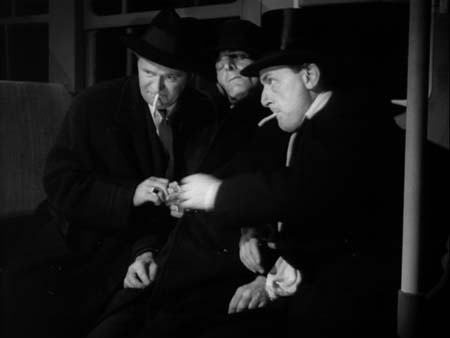
Cerberus stalks the subways.
If you’ve
listened to the commentaries across this entire collection, there’s not so much
in the documentary that stands alone, but it’s a great way to get a
concentrated view at Lewton’s extremely interesting career. His relationship
with his family gets a lot of attention, as does his fascination with death.
There’s also loads of detail about his time working for Selznik and how Lewton
arrived at RKO. Ten minutes devoted to Lewton’s work with Boris Karloff
finishes the doc, which is a good way to go out.
The doc
is a good primer, but tackling the commentaries for all films in the box set is
definitely recommended. James Cromwell’s narration is also worthy of praise,
primarily because he’s not Morgan Freeman.

CHUD man.
(Be
warned that the doc throws out spoilers left and right, so anyone who doesn’t
want to know key details of most of the films should tread carefully.)
Steve Haberman
comments on the film itself; he’s not as much fun as Greg Mank, but the
commentary also isn’t too dry, and it’s just as reverent as Mank’s. Some detail
is duplicated between this disc and Cat People — among other things, you’ll
hear the same background on Tom Conway, who plays Louis Judd. There’s also an
odd thing you don’t hear very often: a glaringly obvious edit when Haberman is
discussing the death of Jean Brooks, who played Jacqueline.
8.5 out of 10
The Artwork
It’s
tough to add class to the cover of a double-feature disc, but Warners has done
a good job. The white frame is surprisingly good for the poster art for each
film, which appears in great color and detail despite the narrow space allotted
for each image. And though the films are ostensibly horror, the white frame is
a good way to emphasize the fact that neither picture is in any way a typical
horror flick. Given the options, this works nicely.
7 out of 10
Overall:
9.5 out of 10